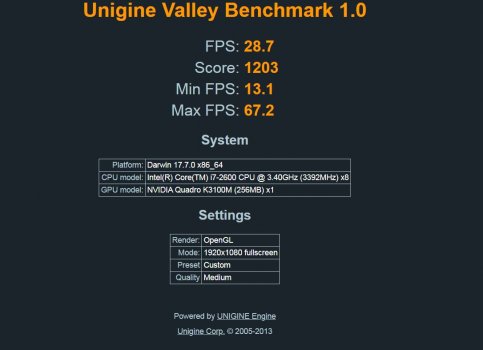Ciao,
so to briefly recap previous episodes, and explain last steps I tried:
- after installing an AMD WX4150, my 2010 21.5" iMac looked dead (no response at all to power-on button)
- I de-assembled the graphics card again and used insulating tape all over it, just to exclude short circuits with the heatsink (see following pictures) as suggested:
- as I mentioned before, I also put a 1mm copper plate on top of the GPU, with thermal paste on both sides (btw I also put thermal paste on the 4 RAM chips, is this correct?)
- result: no change (iMac still dead)

- I plugged off HDD and ODD, and now the system reacts to power-on button (one single chime, then after ~25 seconds fans start running at full speed) - nice that I didn't burn the whole house down after all!
- so I plugged in the Linux USB (I tried both a USB stick and an SD card actually) + external display (via miniDS port), but the external display stays dark ("no signal")
- I also looked at my router connections list, but Linux does not show up (tried the same with my working 2019 iMac, and it shows up nicely in the router connections list, and I'm able to ssh into it as well from a third computer)
Thanks
@KennyW, I guess the last step would be to try the CH341A programmer clip. Not sure I want to go much further in this adventure, this has taken me too much time already. And I'm skeptical on the possibility that things would change after flashing.
Currently, my plan is just to place the original graphics card in place as soon as I find the time. Though I may stil change my mind, of course, if anything else emerges from your feedbacks!
Thanks a lot
@internetzel, I think that there can be no short circuit whatsoever now. So it must be something else. But it was a good shot to try -- and indeed I tried it. Too bad it didn't work.
Mmh
@Nguyen Duc Hieu that's not my understanding. I prepared Windows with auto-login and TeamViewer after reading post #1, so I guess that the system is able to boot even with a non-flashed card onboard. Also, that's the working hypothesis underlying the Linux flash USB stick, isn't it? If I got this wrong, please correct me, as I may be completely lost without knowing it.
Thanks a lot to everybody. Any further hint / comment / suggestion is of course welcome.
Ciao
Sergio





